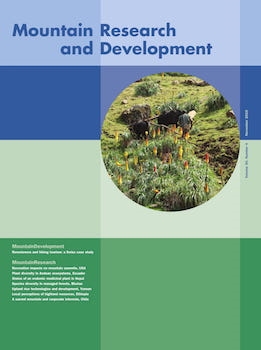Contested Waterscapes in the Mekong Region: Hydropower, Livelihoods and Governance, edited by François Molle, Tira Foran and Mira Käkönen. London, United Kingdom: Earthscan, 2009. xxii + 426 pp. US$ 146.00. £ 75.00. ISBN 978-1-84407-707-6.
Contested Waterscapes is an impressive contribution to the literature. Written in a scholarly yet accessible style, the book presents a coherent analysis of the links between livelihoods, governance, and hydropower—one of the most contested development issues in the region. This coherence arises, in part, from the fact that the book grew out of collaboration amongst the members of a long-standing regional research network: M-POWER (Mekong Programme on Water, Environment, and Resilience). The network brings together academics, policy-makers, and nongovernmental organizations committed to improving governance in the Mekong Basin countries (Cambodia, China, Laos, Burma/Myanmar, Thailand, and Vietnam). Focused on action research and funded by a range of international organizations, M-POWER is coordinated by the Unit for Social and Environmental Research at Chiang Mai University (Thailand).
The M-POWER network's research agenda sits at the nexus of 2 competing (and often incommensurable) worldviews. On the one hand, the development agenda—epitomized by the Laotian government's slogan “Powering Progress”—espouses the need for extensive development of the region's hydropower resources in order to support economic growth and alleviate poverty. On the other hand, civil society groups emphasize the social and environmental costs of hydro-development and criticize exclusionary decision-making processes and the disproportionate allocation of benefits to political and economic elites. This regional debate is a microcosm of the global debate on large dams, but is particularly acute in the Mekong region given the relatively low scale of hydropower interventions (due to historical issues, including civil war and regional political factors) in comparison with other major world rivers, such as the Nile. Given its resonance with debates over hydro-development in other regions, the book will speak to a wide readership.
The book is divided into 3 parts. Part I provides context, summarizing the contested history of hydropower expansion in the Mekong region. The 5 chapters provide detailed accounts of the major players in hydropower expansion and of the development trajectory and public debates over 3 of the region's most contested hydropower sites: Pak Mun Dam in Thailand, Nam Theun 2 Dam in Laos, and the as-yet undammed Salween River in Myanmar.
The chapters in Part II present case studies of distinctive Mekong livelihoods and their articulation with modern development practices. Successive chapters focus on a set of issues (irrigation, flooding, and fisheries) in different subwatersheds (including the Nam Songkhram, Thailand's largest floodplain wetlands in the Mekong Basin, and Vietnam's Mekong Delta). Each chapter is structured around a critical issue and unpacks associated debates. For example, Chapter 6 explores irrigation, which accounts for 80 to 90% of water abstractions in the Mekong region. Traditional irrigation practices are contrasted with the modernization and expansion of irrigated development systems, in which increased water availability is a key factor enabling a shift from single-crop, rain-fed rice agriculture to multiple-cropping systems (and increased yields). Based on contemporary studies of the effectiveness and efficiency of irrigation schemes, the authors question the rationales that underpinned irrigation development in the past and explore the implications for poverty alleviation and agricultural development initiatives. Chapters 7 and 8 explore the techno-politics of flood control and query the costs and benefits associated with the historical transition from adaptive flood response to state-driven, technology-intensive flood control approaches. Chapter 9 raises the issue of the impacts of hydropower development on fisheries (a central issue, given that fish protein is key to subsistence livelihoods in the region), and argues that finding an acceptable balance between dams and productive fisheries is an urgent issue for the region.
Building on this context, Part III—the conceptual core of the book—offers a set of analytical perspectives that interpret hydropower development through 2 key concepts: political power and the politics of knowledge. A central emphasis in this section of the book is on the articulation between discourses of development, landscape transformation, governance reform, and the ensuing impacts on livelihoods. Chapter 10 argues, for example, that hegemonic discourses about the political necessity of “greening” Thailand's northeastern region (Isaan) have supported—sometimes without reasonable justification—hydropower development schemes. The articulation between politics and discourses of development (termed “meta-justifications”) creates opportunities for symbolic advantages for those who seek power, but does not always lead to promised outcomes in terms of economic growth and poverty alleviation. Subsequent chapters take a similar approach, exploring the political agendas and exposing the inconsistencies in dominant narratives of urban flood protection, capture fisheries, and hydrological modeling. One is reminded of James Ferguson's classic analysis of the unintended consequences of development by the anti-politics machine created by development agencies working on the Lesotho Highlands Water Project (Ferguson 1994), or of Mitchell's (2002) analysis of the techno-politics of development along the Nile.
To sum up, this is an excellent, comprehensive edited collection. Nonetheless, I would raise 2 critiques. First, a Chinese perspective is missing from the analysis. As China controls the headwaters of the Mekong River and has advanced plans for significant hydro-development on the Mekong and its tributaries, a separate chapter could have been devoted to hydro-development in China. Instead, this book focuses on what was once coyly termed (in the Cold War period) the “lower Mekong”—those noncommunist countries that participated in the Mekong River Commission. Second, the book would have benefited from more contextualization in the opening and closing chapters: a comparison of the Mekong region with other regions (eg the Indian subcontinent) and more thorough consideration of the changing international context with respect to large dams as well as reference to key sources for broader context, such as Khagram (2004). These relatively minor points aside, this is a volume well worth reading; it is likely to be of interest to students, researchers, policy-makers, and members of nongovernmental organizations alike.
Open access article: please credit the authors and the full source.





